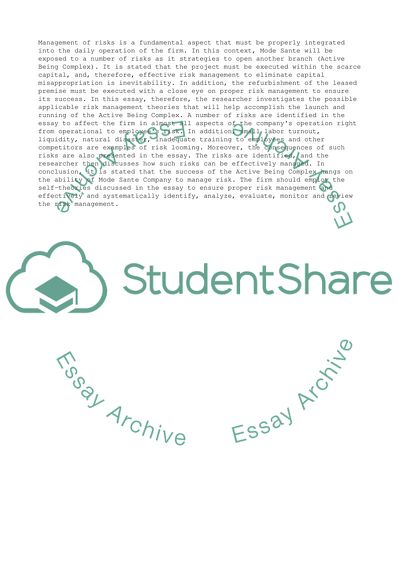Cite this document
(“Project Management: Management of Risks Essay Example | Topics and Well Written Essays - 1250 words”, n.d.)
Project Management: Management of Risks Essay Example | Topics and Well Written Essays - 1250 words. Retrieved from https://studentshare.org/management/1684761-project-management-management-of-risks
Project Management: Management of Risks Essay Example | Topics and Well Written Essays - 1250 words. Retrieved from https://studentshare.org/management/1684761-project-management-management-of-risks
(Project Management: Management of Risks Essay Example | Topics and Well Written Essays - 1250 Words)
Project Management: Management of Risks Essay Example | Topics and Well Written Essays - 1250 Words. https://studentshare.org/management/1684761-project-management-management-of-risks.
Project Management: Management of Risks Essay Example | Topics and Well Written Essays - 1250 Words. https://studentshare.org/management/1684761-project-management-management-of-risks.
“Project Management: Management of Risks Essay Example | Topics and Well Written Essays - 1250 Words”, n.d. https://studentshare.org/management/1684761-project-management-management-of-risks.


